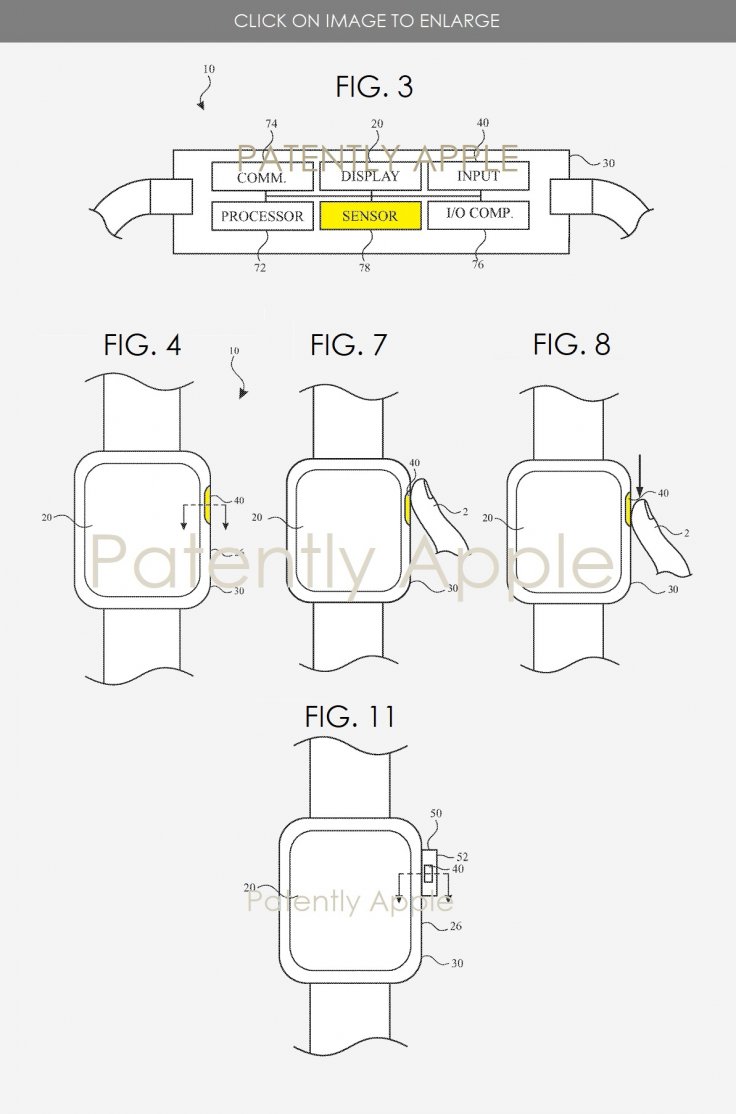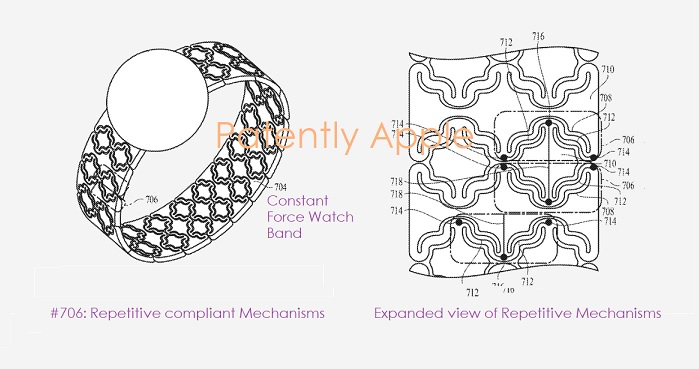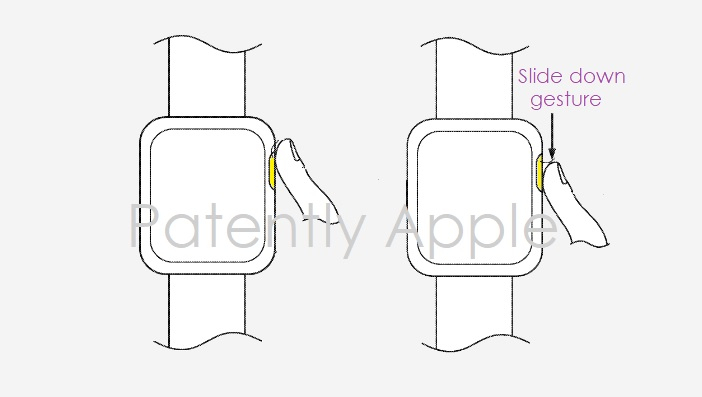With the growing success of its smartwatch, Apple is continuously improving the device, and its upcoming offering is expected to sport new features. Though there are no leaks or rumors about the anticipated smartwatch, two new patent filings provide glimpses of two of its features.
In its upcoming watch, Apple might sacrifice the digital crown. Instead, Apple intends to feature an all-new optical system which would be able to recognize and perform different tasks according to touches and gestures. In existing Apple watches, the digital crown offers a plethora of utilities like scrolling through the menu and sending/reading text messages. But the crown is also prone to damages.
Optical sensors
The new patent filing shows that the replacement would pack an array of optical sensors and let users input their instructions. Sacrificing the crown might also help Apple to make it more compact and ergonomic. The optical sensors could offer similar utilities and features which are now provided by the existing digital crown.

Integrating the optical sensors in the Apple watch could also help them to install a number of sensors like touch sensor, force sensor, temperature sensor and a fingerprint sensor to offer a slew of utilities.
The optical sensors could detect motion, position, orientation, speed, acceleration, contact and proximity of users. According to the patent filing, the optical sensor would be embedded on the right top side of the Apple watch, where the digital crown sits.
New watch band
Apple has filed a total of 42 patents in the U.S. Patent and Trademark office, out of which one is related to Apple watch bands. The new move could help Apple watch bands to maintain constant tension in its length while on the hand.

By generating the tension, the new watch band could maintain a continuous force on users' wrist to offer more ergonomics while ensuring the watch doesn't get tight or constrict the users' wrist. The constant force on the wrist could also help the new watch to offer more precise and analytical use of the existing sensors.
(Source)










